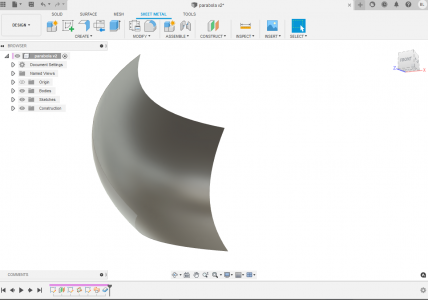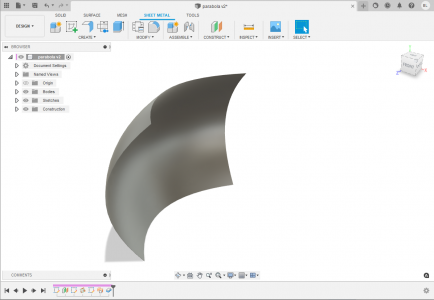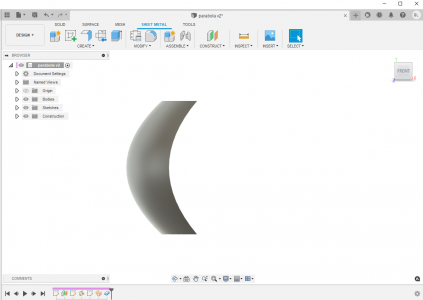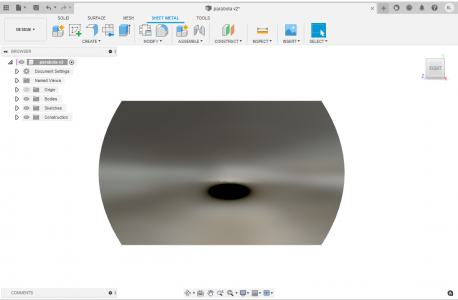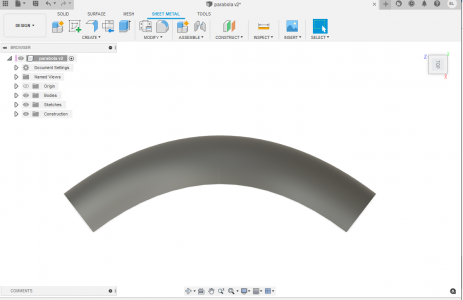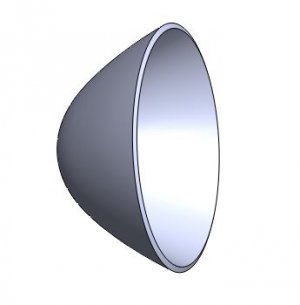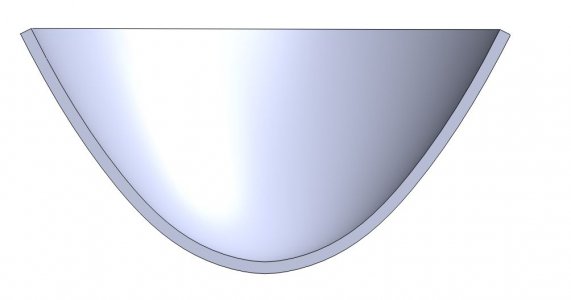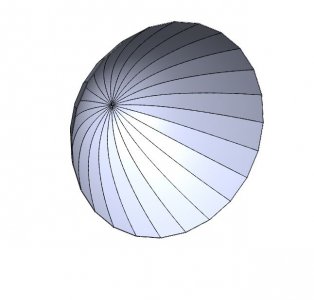Due to the fact that the sun is not a point source (it is about .534 degrees across the sky), the light won't focus to a point. The size of the sun's image is given by: D = mirror-diameter * sin(.267)/sin(a), where .267 is the half-angle of the object (i.e., the sun) and a is the half-angle between the axis of the mirror and a line drawn from the outer edge of the mirror to the focal point. I used
this web page as a reference for my calculations.
It is easier to calculate this if we think in terms of the mirror's f-number, given by f/d where f is the focal point and d is the diameter of the lens. I wrote up a little spreadsheet to calculate D (attached) and it shows that you will need a mirror with a fairly low f-number to focus the sun's image into the small spot you want. Something with an f-number around 2. Since your mirror surface won't be a perfectly smooth one, you can be sure that the spot size will be larger than what my spreadsheet tells you.
My spreadsheet doesn't calculate the f-number based on your desired spot size, so you will need to play around with the mirror diameter and f-number to see how D varies.
For a 1-meter (100cm) diameter f-2 mirror, your mirror calculates out to be about 3.125cm deep (this is the value "H" in the spreadsheet). The one thing you need to keep in mind is that the mirror diameter and spot size will completely define the rest of your system dimensions.
I think you will want to achieve something better than 10% accuracy in your mirror shape (or figure). This means you will need to achieve at least a ~1mm dimensional tolerance (probably noticeably better than this).
Given the requirements, it may be difficult to get what you want with your 1-meter mirror. As a fallback, you may want to consider going with a larger mirror and accepting the fact that you're not going to get 100% of the light on your target.



